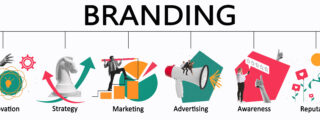
Go Psycho!
The benefits of psychographics over demographics. They’re both important. However, if you’re like most small businesses, you don’t bring psychographics into play as often as you could. Here’s how you can, why it’s important, and how psychographics can help you pinpoint and target patient wants and needs.
Tip: The path to profitable growth may lie in a company’s ability to get loyal customers to become, in effect, its marketing department.
PSYCHO WHAT?
Psychographics are an important part of the marketing picture, especially when it comes to customer retention. Here’s the difference between the two terms. Demographics is mostly the dry stuff—like age and gender. Psychographics, super important when it comes to targeting your marketing messages, pretty much tell you who your patient or prospect really is—the ‘why they buy’ info like hobbies, buying preferences, likes and dislikes.
SMALL TALK
It’s important to first ask and then find a way to keep this psychographics information on file. So next time you see a returning patient, remember to record a lot of information you can garner through “small talk.” That conversation could include:
- what they do for fun…hobbies and interests;
- whether they made any interesting or exciting purchases recently;
- if they’ve seen any good movies (whether it’s in the theater, on TV, or online will tell you about their habits);
- if they like Pinterest, for example, more than Facebook or have any favorite websites;
- where they shop, as that shows whether they prefer ‘real deals’ or a higher-end shopping experience.
TARGETED SURVEY
You probably don’t have a lot of that information, so consider sending a targeted survey to part of your patient list (assuming they’ve given you permission to do so). Maybe it’s Boomers or sports-minded patients, young families or Millennials. Then use that information to better target their wants when they come back in and to better pinpoint what messaging to email them or post online in the future. Too many questions to ask? Then follow the lead of the Harvard Business Review (HBR) and ask just one key question at a time. You’ll get more response and more in depth answers.Follow it up with another one-question query a month or two later…and so on. HBR says that not only gets you more info, but it solidifies the relationship with your consumer. That’s important, adds HBR, because, “The path to profitable growth may lie in a company’s ability to get loyal customers to become, in effect, its marketing department.”
THREE EASY QUESTIONS
There are basically three areas of questioning you want to cover over time online or in conversation. As defined by The Daily Egg, they are:
- What are their interests?
- What activities do they participate in?
- What are their attitudes about ______?
Why bother? As Mashable says, “Build a deep understanding of your customer or risk irrelevance.”
WHY? RETENTION!
Why is all this so important? It’s all about retaining patients and growing your base through them. As retailpro.com explains, “It is 6-7 times more costly to acquire a new customer than to retain an existing one.” What does retention do for your bottom line? “Boosting customer retention rates by as little as 5% can increase profits up to 95%.”
You may not call it psychographics, but are you already using it in your marketing? If so, please tell us how and join in the Facebook conversation here.
Comments are closed.







